Although nikah is the obligatory part and the reception a Sunnah (Prophetic practice, sallallahu alaihi wa sallam), the amount of time and effort (and money) invested is far from balanced.
The preparations start almost a month before the event. The male members travel to all the four directions for inviting near and far (and farthest) relatives and in-laws spread over generations. Wedding cards are printed and given to the guests on their visit. The list is meticulously prepared, with careful consultations with elders so that no one is missed. The actual turnout maybe less or even three times more!
The shed is made of long bamboo sticks and covered by sheets, with strong protection from the monsoon rain. This takes almost a week to complete.
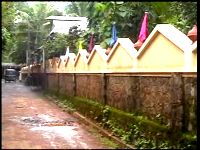
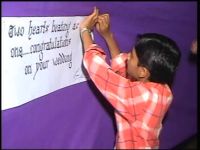

The house is decorated with artistic creations, in this case,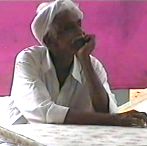 colorful flags were tied on the fence of the house. Wishes from family members and verses from the Holy Book are written on charts and pasted on walls of the interior.
colorful flags were tied on the fence of the house. Wishes from family members and verses from the Holy Book are written on charts and pasted on walls of the interior.
Every member of the household, young and old, plays an active role in the preparations for the joyful event. The old ones may sometimes resort to silent supervision, with respect to their wisdom and experience.
 The previous night of the wedding also witnesses a festive mood with neighbors and immediate family members pouring to share the joy and anxiety for the next day. Some guests who are unable to attend the wedding day, also make their visit on the previous night.
The previous night of the wedding also witnesses a festive mood with neighbors and immediate family members pouring to share the joy and anxiety for the next day. Some guests who are unable to attend the wedding day, also make their visit on the previous night.
The crowd remains up to late in the night and gives a helping hand to the household in whatever capacity they can. Chairs and tables are laid in lanes and all the ingredients required for next day’s feast is made available.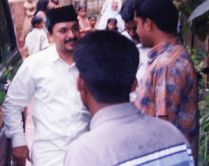
The wedding is also a good opportunity to renew existing relationships within the community and establish new ties. In some cases, it becomes a lifetime opportunity to meet far off relatives, who one may not meet later in their life.
The guests start to arrive from around 10 in the morning and continues to 2 o 3 in the afternoon.
Depending on the prevailing custom in certain areas, sometimes a small group of men come from the bride’s house to call upon the groom. He leaves with them, along with the ladies of his household normally led by his sister to bring the bride home.
Before leaving, a dua session takes place, usually by a well-known figure. In this case, it was the Sayyed Sadiq Ali Shihab Thangal, state president of Youth League (a wing of Indian Union Muslim League).
The boy is dressed in bright cream-colored sherwani suit with golden embroidery. Although a costume belonging to the North of India, this has becoming very popular in the south also. Western outfits like the Suit and tie has taken a back seat in the recent times.
India, this has becoming very popular in the south also. Western outfits like the Suit and tie has taken a back seat in the recent times.
It is the men who get to display their prowess in the nikah. But in a wedding it is the ladies who reign supreme. If nikah is all about the singular white fabric and handshakes, then wedding is all about multi-colored costumes designed weeks before the event; jasmine flowers are ordered in bulk and hands are painted red in
henna… celebrations go to the extreme end
of the permitted limits! A day when culture shows off itself over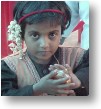
formal religion.
The boy reaches the girl’s house and is seated in middle of the crowd for everyone to see. A battalion of uncles greet him while the womenfolk crowds the verandah of the house to have a glimpse of the groom.
The sister-in-law (groom’s sister) enters into the house and starts to beautify the bride with cosmetic touches.
The bride is finally brought to sit beside the groom and camera go wild with flash lights. The bride’s parents and grandparents also join the shoot. The bride is dressed in a three-piece Indian shalwar khameez, in a mix of
parents and grandparents also join the shoot. The bride is dressed in a three-piece Indian shalwar khameez, in a mix of
maroon and golden color with plenty of embroidery, scarf modeled after a
Malaysian design and jewellery of Arabian style . Flowers are also attached.
(Globalization finally completing its reign!)
Thereafter the bride steps into the car which is decorated with flowers and names of the couple. Her feelings of shyness, fear and sadness result in tears which is natural of any typical bride.
The couple reaches the boy’s house accompanied by a huge crowd and they are greeted by a surprise firework show, smartly planned by the groom’s cousins. Everyone is struck and wonders what caused the explosive sound.
The guests are seated and a light entertainment show is organized. Small children play the traditional oppana dance which is typical for weddings only. In the dance, they greet the bride and pray to Almighty for the couple’s happiness.

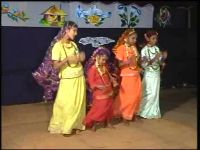
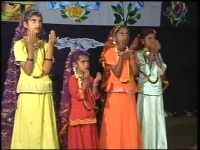
She is welcomed home by the mother-in law and in she steps with the right-foot (following the practice of Prophet sallallahu alaihi wa sallam). The latter puts for her a gold bangle, for symbolic reasons only.
The guests continue to remain in the home- everyone looking for a chance to converse with the bride and relatives introducing one another.
By almost 10pm, the guests disperse. The feast comes to an end.
